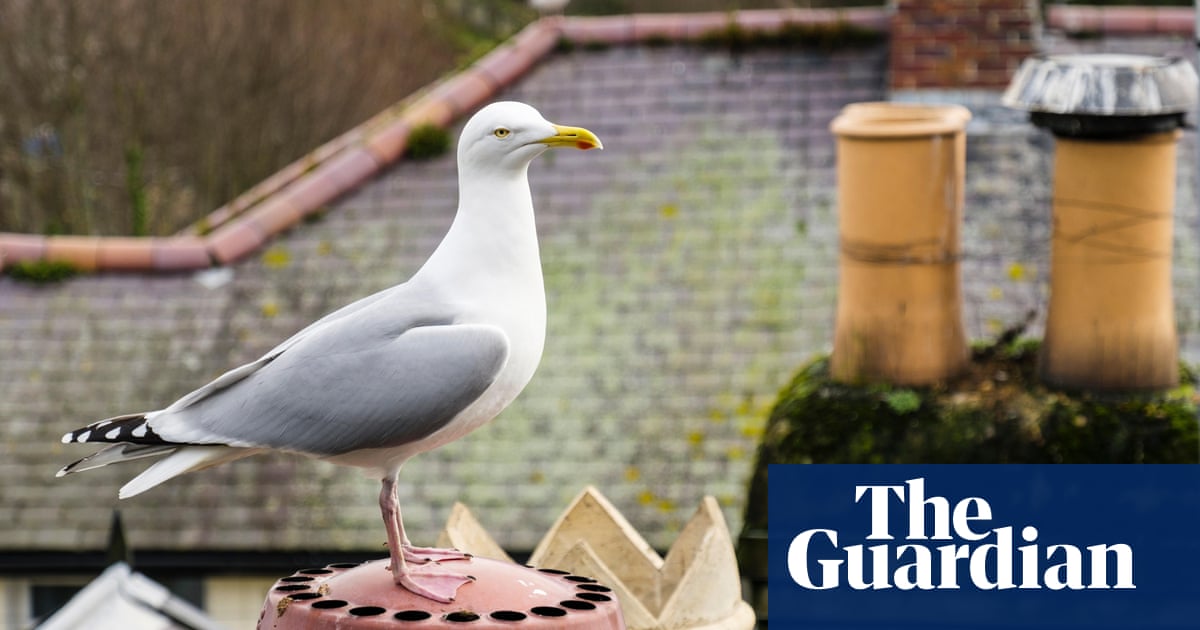Their cheeky chip-snapping, swooping and aggressive squawking have given seagulls a reputation as a scourge on coastal towns, both terrorizing unsuspecting tourists and enraging residents.
And as the marauding birds have ventured inland and established urban colonies, cities have deployed spikes, nets and even birds of prey as deterrents. Now Worcester city councilors appear to be considering a new escalation in the fight: bird contraceptives.
Inspired by experimental pigeon control schemes in Barcelona and Venice, Labor councilor Jill Desayrah described the approach as “safe sex for seagulls”. “I am concerned that the increasing number of seagulls is getting out of hand,” she said, according to a report in the Mirror.
Contraceptives have been used with varying degrees of success as a humane approach to contain populations of kangaroos, wild horses, prairie dogs, gray squirrels, and rats in the New York metro area. But experts are skeptical that the approach is a risk-free quick fix.
First, the perception of seagulls as an out-of-control pest species may not match reality. “While it may appear that gull species are thriving due to their increasing numbers in some urban areas, they are not doing well elsewhere,” said a spokesman for the Royal Society for the Protection of Birds (RSPB). “People will be surprised to learn that many gull species are red and amber listed across the UK – the highest levels of conservation concern – including herring gulls and lesser black-backed gulls, both of which are in decline nationally.”
The annual survey of the gull population in Blackpole, the area of Worcester that has been floated as a potential site for a pilot, found 376 pairs were living in retail parks and industrial estates. The majority are lesser gulls, which are a protected species.
“We would therefore be concerned about any action taken to reduce the productivity of the birds without reference to Natural England, the government’s scientific adviser and wildlife regulator,” the RSPB spokesman said.
There is also the issue of effectiveness: seagulls must take the pill daily. But with scraps of discarded food widely available, there is no guarantee that the council’s contraceptives would be favoured.
“Gulls can eat many things,” said Cecilia Soldatini, a senior researcher at La Paz University in Mexico whose research focuses on seabird ecology. Her team uses cheese-free fries to lure seagulls, but the birds refuse fries that have become soggy in the rain.
“They are not forced to eat what you give them,” said Soldatini, who previously studied the use of contraceptives in feral pigeons in Venice and found the approach to be of limited utility.
Gulls also have a feeding range of 10–15 km (6–9 miles), according to Soldatini, meaning they are not dependent on resources from a tightly defined area. The key, she said, was to remove the resources that attract seagulls in the first place. “Don’t make food available to them, work to collect garbage. This is the only way.”
Dr. Giovanna Massei of the University of York, who is Europe director of the Botstiber Institute for Wildlife Fertility Control, said “hard scientific evidence” should be sought before any roll-out – research she said councils should fund if they wanted to investigate this option. “If you put something out and then there are lots of fish and chips lying around, it is difficult for [the gulls] to get the dose they need.”
She added: “I understand some councils are desperate to find a solution.”
after newsletter promotion
Kay Haw, the director of the UK Squirrel Accord (UKSA), said injectable contraceptives had been used successfully in herd species such as wild horses in the US. UKSA is investigating oral squirrel contraceptives with the government’s Animal and Plant Health Agency. “There are around 3 million gray squirrels in the UK,” she said. “You can’t catch them all and inject them.”
However, extensive research and field work has had to be carried out over several years before the planned distribution of medicated food can continue. “It’s not a quick process,” she said.
A key requirement is to ensure that the contraceptives only get to the target species—in this case, through a special feeding device that red squirrels are unable to operate. Haw said the protein-based contraceptive used breaks down so quickly that a predator would have to “eat 1,000 squirrels” to be affected.
“People aren’t necessarily as careful as they need to be about this,” she said. “They have problems on the Isle of Wight with red squirrels being poisoned by rat poison.”
Soldatini agreed that uneaten food could pose an environmental risk. “If it rains, it can go into rivers or sea water,” she said. “Those same pills can affect the populations that live there—fish, other birds, marine mammals.”
The Squirrel Project also has another motivation: to support the growth of red squirrel populations and the health of forests, not simply to remove a species considered a nuisance to humans. “We are working on an invasive species problem – the [grey squirrels] should never have been here,” Haw said. “It’s a different angle than a native species.”
A Worcester City Council spokesman said: “An annual gull report will be presented to the council’s environment committee on November 5. This will allow councilors to consider a gull management program for 2025.”
